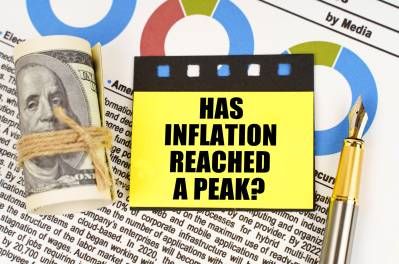
The White House and the media are touting the tentative agreement reached last night between the major U.S. rails and their unions to avert a strike. The agreement, if ratified by union members, would help avert a work stoppage that would have crippled supply chains and passenger trains and would have restricted the movement of essential goods to distribution centers and consumers. A rail strike could severely impact a range of industries, from the autos to agriculture to retail, as about 40% of goods that are shipped long distance in the U.S. rely on the nation’s rail system. It could also cause disruptions to the energy industry in ways that may lead consumers to pay more for gasoline, natural gas, and electricity. A shortage of essential goods would precipitate price increases, inflation, and significant economic damage if it persisted for an extended period.
Averting a rail strike comes at a price, a 24% compound wage increase over its five-year term, as well as an annual lump-sum bonus payment totaling $5,000. One should not overlook the fact that these wages increases will create more inflationary pressure. Rail freight transportation remains an important part of North American economies. These wage increases will trigger increases in the cost of rail freight transportation. This is not to say that rail workers are not deserving of an increase in wages and benefits. The point is that these increases contribute to the challenges we are all experiencing with inflation and will make it more difficult for central banks to bring down inflation.
The Wall Street Journal reported that “the U.S. consumer-price index rose 8.3% in August from the same month a year ago, down from 8.5% in July and 9.1% in June, the Labor Department said Tuesday. The slower rate of increase reflected falling gasoline prices last month.
Core prices, which exclude volatile food and energy items and are seen as a better gauge of underlying price pressures, rose a notable 0.6% in August from July—double their 0.3% increase in July from June. The core CPI rose 6.3% in August from a year earlier, up from 5.9% in both June and July, reflecting higher prices for housing, medical care and college tuition.
Price increases last year initially appeared to be driven by a handful of items such as used cars or airfares that could be tied to the reopening of the economy from the pandemic. The worry for the Fed now is that prices of more items are rising briskly because incomes are growing and companies have the ability to pass along higher costs and markups to their customers.”
What does this all mean for manufacturers, distributors, and truckers? With rail wages going up, rail freight costs will increase. During the first two years of Covid, driver shortages, increased consumer purchases of goods versus services, and tight capacity drove up truck freight rates. But as the Fed raises interest rates to curb inflation, this may push the economy toward or into a recession. This should create a more balanced environment for freight rate negotiations.
One must remember that freight transportation expenses are part of the cost of every product that moves to a distributor, retail store or directly to a consumer. Manufacturers and distributors can be part of the inflation problem. or part of the solution. Shippers can try to pass along freight rate increases to retailers and consumers, thereby worsening inflation or they can more aggressively manage their freight rate negotiations. The latter approach keeps total costs under control and enhances the price competitiveness of their products.
There are two components to freight rates, transportation costs and fuel (surcharge) costs. Both components can and should be negotiated. A competitive bid exercise can produce significant savings. Since fuel costs have been on a downward trajectory for the past 70 days, shippers should be very vigilant with respect to fuel surcharge formulas and discounts. Fuel is a large component of total freight costs. Shippers should be doing a deep dive into their truckload rates, specifically where the fuel component is embedded in the flat rate, or rate per mile.
Motor carriers are dealing with driver shortages, rising fleet equipment expenses but declining fuel costs. Truckers can also be part of the problem, or part of the solution. Those truckers that push for higher freight rate increases may drive some shippers to other carriers, or to at least conduct RFP exercises. More modest rate increase expectations will allow truckers to improve customer retention but still achieve some rate relief.
I have written several blogs on freight bids over the years, from both a shipper and carrier perspective. Look at them to make sure your company has an effective process. If you need help, feel free to contact me at dan@dantranscon.com.
To stay up to date on Best Practices in Freight Management, follow me on Twitter @DanGoodwill and join the Freight Management Best Practices group on LinkedIn. In you need help with your freight rate negotiation process, contact me at dan@dantranscon.com.



















